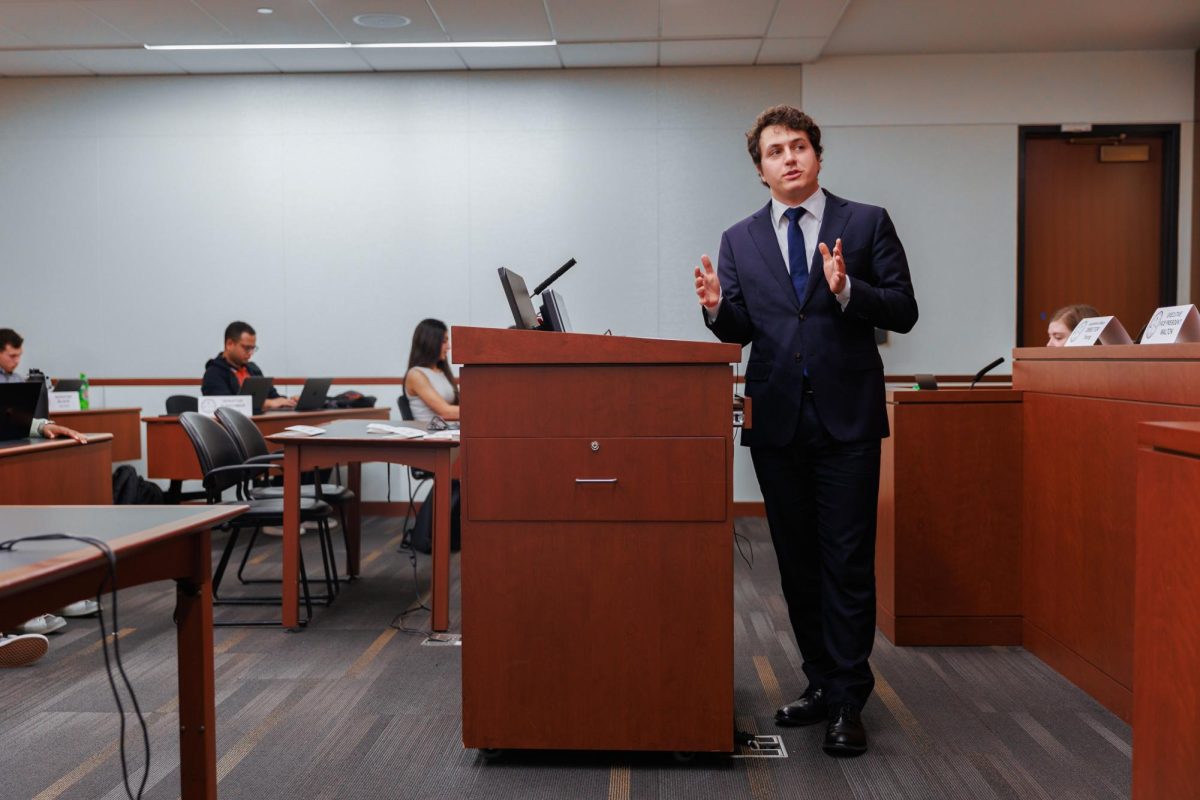With applications up 15 percent from last year and 150 more students already admitted from among early decision I applicants, GW officials said they are still working toward an “eclectic” class of 2,250.
University President Stephen Joel Trachtenberg said he expects GW to lower its admission rate from 48.5 percent last year.
“My expectation is that it will be harder to get into GW this year than it was last year,” he said. Trachtenberg would not specify how much he expected admission rate to drop.
As of Jan. 24, GW received about 16,000 applications, up from 14,000 at this time last year, Director of Admissions Kathryn Napper said.
The regular decision deadline was Jan. 15, but Napper said she expects about 1,000 more applications in the coming weeks if the current rate continues.
“It is hard to say how many applications will be in,” she said. “There is no formula for it.”
Napper said the University has admitted 540 students in the first round of early decision selection compared with 400 last year.
Napper said she expects to have about 1,500 spaces left for the incoming class after the second round of early decision admissions are sent out in early February. Last year, the school admitted 100 early decision II applicants but plans to admit a little more than 200 this year, she said.
Napper said it is difficult to determine how many students to accept because of many “environmental factors” this year.
“With 9/11 and the economy, it is going to be a (different) year,” Napper said.
Trachtenberg agreed, noting that GW needs to keep the figure very close to 2,250 because of short resources, including faculty members and housing space.
“(Admissions) is more of an art than a science,” he said. “We don’t know how to correct our numbers for the economy and 9/11.”
Trachtenberg said admissions used to be a predictable system, but now the numbers “jump all over the place.”
Trachtenberg said last year was a good example of admissions unpredictability with the extraordinary jump in GW’s yield rate or the percentage of applicants who accept their offers to attend GW. Last year, the rate jumped from 29 to 33 percent, catching GW off guard with 300 extra students to house.
Napper said she will use a larger wait list to help control the class size.
She said about 600 students were wait-listed last year out of 16,000 applicants. Napper said she is planning to wait list “a couple hundred” more this year.
“The problem is we need to come in at 2,250. If there is any shortfall we are in trouble . hopefully the wait list will work,” she said.
Trachtenberg said numbers alone cannot determine how the admissions process will work this year.
“We are trying to put together an eclectic and pluralistic mix of interesting and interactive people,” he said.
Trachtenberg said the admissions game is much like the story of Goldilocks and the three bears.
“It’s like porridge – it can’t be too hot or too cold, it needs to be just right,” he said. “You want someone to be in the marching band and you want someone to collect butterflies. You don’t want everyone from North Dakota.”
When asked what the University would do if the University underestimates the yield, Trachtenberg noted GW would try to “get it right.”
“Why should we always anticipate the worst? We are going to be professional,” he said.
Trachtenberg declined to comment on whether the University would acquire more property if the freshman class grew to a record size once again.
“The Hatchet offices could probably house about 15 kids,” Trachtenberg offered.






